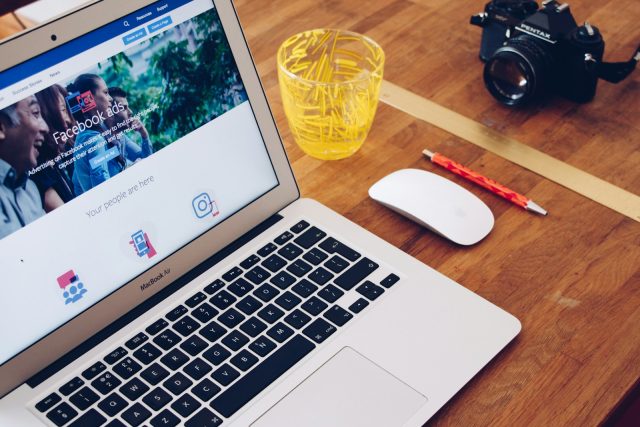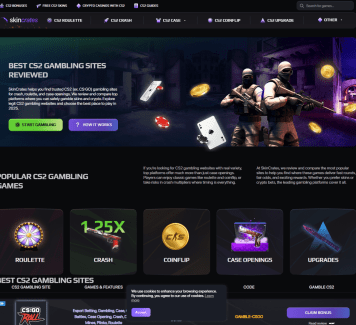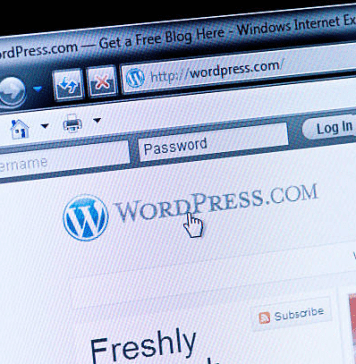
As more and more enterprises implement a headless content management system (CMS) for increased flexibility, scalable solutions, and easy upgrades, content layer security becomes even more vital. Yet a headless architecture comes with specific security concerns. Fortunately, by adhering to the proper measures for hardening your content layer, your business can reduce weaknesses and maintain predictable, secure access to content across any digital avenue.
What Security Risks Does a Headless CMS Create?
While a headless CMS provides much flexibility and accessibility, it also brings security risks. Since most headless content management systems rely upon API usage to deliver content, if those APIs are insecurely managed, they could expose sensitive content to misuse and data breaches. Additionally, a headless approach is less traditional and more decentralized, which means that there are more places for bad actors to enter; therefore, a comprehensive, multi-channel approach to security is necessary for successful content security. Understanding how to create digital content securely within this architecture is essential not just for performance and personalization, but also to safeguard brand integrity and user trust.
Where Should You Focus Security on a Headless CMS?
Because APIs are the most fundamental part of a headless CMS as a mechanism of communication between a third-party application and the internalized content APIs should receive the vast majority of upgraded security. For example, authentication and authorization precautions for secure API access are crucial. This means that content creators should consider OAuth 2.0 or JWT-based authentication to prohibit unauthorized persons or applications from accessing sensitive information. In addition, clear API permissions and role-based access control (RBAC) ensure that even authorized users do not unintentionally access or modify overly sensitive information without approval, preventing huge vulnerabilities.
How Else Can Content be Secured?
Another way to secure sensitive information is to use advanced encryption capabilities. Any sensitive information that passes through APIs should be encrypted while in transit to and from its anticipated locations. For example, encryption technologies such as Transport Layer Security (TLS) for information in transit and Advanced Encryption Standards (AES) for resting information can prevent interception, unauthorized use, and theft. If the information is appropriately encrypted, even if information is captured during a breach, hackers cannot use the information since they most likely do not possess the decryption key.
Conducting Regular Security Audits and Vulnerability Scans
Regular security audits and vulnerability scans are an essential aspect of an effective headless CMS security strategy. Organizations can reduce attack vectors by scanning for vulnerabilities consistently through their systems, APIs, and content storage solutions while being better positioned to detect and address security weaknesses before they’re exploited. Regular security audits allow changes to be made sooner rather than later, creating smaller attack surfaces and facilitating compliance with both regulatory standards and security best practices that enhance overall security posture.
Applying API Rate Limiting and Throttling
API rate limiting and throttling can keep the content level safe from denial-of-service (DoS) attacks and brute-force attempts. Rate limiting keeps the number of potential requests during a period limited; thus, security threats posed by bad traffic and resource drain are significantly reduced. Throttling also increases uptime and access to services, providing better reliability of headless CMS solutions.
Utilizing Web Application Firewalls (WAF)
Web application firewalls (WAF) serve as another layer of defense when embarking on a headless CMS development endeavor. WAFs control and monitor incoming web traffic between a browser and web application. They filter and observe incoming requests to detect bad requests or unwanted activities aiming to compromise content-based APIs or back-end systems. A WAF stops vulnerabilities, injection attacks, and other exploits that could compromise data or systems before causing negative issues.
Enforcing Secure Development Practices
Security should be enforced throughout the entire development lifecycle. Secure coding standards, regular code reviews, and aggressive testing ensure that security is an ongoing concern during the entire anticipated lifespan of headless CMS applications. Developer training and policies empower teams to identify and address potential security flaws prior to deployment; not only does this decrease the likelihood of loopholes being exploited during development, but it also enhances security for the future content layer.
Establishing Robust Access Controls and Permissions
Robust access controls and permissions are the best way to prevent content mismanagement within a headless CMS. Defining roles and controlling who has access to what ensures that all users can only view and manage what they need. Permission levels help prevent accidental or malevolent content mismanagement, which reduces the risk of credential theft or internal attack while promoting confidentiality and integrity.
Identifying Security Flaws and Quickly Addressing Breaches
The ability to identify security flaws helps ensure that companies can quickly address breaches. Logging features, on-site alerts, and automated notifications can help signal when something is amiss or when a breach occurs, prompting an immediate investigation. If and when breaches occur, those with comprehensive response plans will be able to address the issues in real time finding root causes, addressing concerns, and restoring functionality rather than letting a breach linger to disrupt content creation efforts for longer than necessary.
Defending Against Injection and Cross-Site Scripting (XSS) Vulnerabilities
Injection and cross-site scripting (XSS) attacks can bring sensitive content or user information to unethical third parties, which makes these two potential vulnerabilities something to avoid with a headless CMS. With input validation, parameterized queries, and rendering content guidance, these deficiencies are avoided. In addition, if developers understand common attacks through training, the content layer can be that much more secure for the most reliable digital experience for everyone.
Maintaining Current Versions of All Software Elements of the Headless CMS
All software elements of a headless content management system must be current and patched to avoid vulnerabilities. Therefore, organizations must regularly be on the lookout for necessary patches and upgrades to avoid deficiencies in compliance, this also means keeping API gateways and all libraries and dependencies current. When other users find vulnerabilities and associated updates, such fixes go a long way in securing the content layer from prospective exploits.
Ensuring Secure Backups and Disaster Recovery Solutions Are in Place
Security is not only how to prevent hacks but how to work should a disaster occur. Ensure effective disaster recovery solutions that work, and maintain encrypted, offsite backups. This allows for rapid restoration of compromised content, for example, without stressing vulnerabilities or exploits. In addition, disaster recovery solutions with recovery-time objectives and defined roles during disasters ensure content stays managed during hacks or other surprises. The more downtime prevented, the better the efficiency.
Security Awareness Education and Training Teams
Organizations’ defensive capabilities can be improved through security education and training initiatives. Security trainers explain appropriate procedures and expected reactions during internal and external security incidents, and the more often it’s presented, the more informed the team will be about new security threats that emerge. With the proper security information, empowered teams are more likely to advocate the best security practices this minimizes the vulnerabilities associated with human error and ensures that everyone takes responsibility for fostering a company-wide security-friendly atmosphere for headless CMS and their valuable content resources.
Multi-Factor Authentication (MFA)
Multi-factor authentication (MFA) is an easy yet effective practice to strengthen security when accessing the content management system. Each time someone needs to log into a system, access to those credentials requires more than a username and password. By providing a second layer of authentication (e.g., one-time pins sent to phones or emails), the likelihood that a hijacker gains access to the site simply because they’ve hacked someone’s password is significantly reduced. MFA operates as a cheap, effective security solution that can easily be integrated to add another layer of precaution for content accessibility, integrity, and confidentiality.
Choose Microservices Architecture for Additional Security
Opting to use a microservices approach with the headless CMS allows for another way to improve security. Microservices allow companies to delineate each service individually through APIs so organizations can secure, track, and monitor each individual service without having to compromise the entire project. This means there are fewer likely exploits since more specific, focused security measures can be used. Should something become compromised, the exploit is easier to detect within a microservice architecture and less collateral damage might occur across an entire integrated solution, making it easier to fix while keeping other additional layers of protection intact.
Data Masking for Enhanced Security of Sensitive Information
Data masking for enhanced security of sensitive information or personally identifiable information (PII) in a headless CMS. The less exposed sensitive data whether by anonymization, obfuscation, or encryption in transit or at rest the less vulnerable an organization will be in the case of a data breach. Data masking provides awareness that the organization is compliant and protective of its users trust is gained when the sensitive and proprietary content assets endure from the get-go.
API Security Connected to Continuous Logging and Auditing Compliance
API security is connected to continuous logging and auditing compliance. When things are constantly logged, actions taken, changes made within the API it’s easier to detect something out of the ordinary based on requests and investigatory actions. Troubleshooting occurs more rapidly with logs since there is documentation of actions taken with timestamps. Audit compliance provides the opportunity for the proper response and necessary actions to occur without violating regulatory compliance.
Conclusion
Increasing security of the content layer in a headless CMS solution requires an extensive, proactive effort since a decoupled structure creates just as many new vulnerabilities. The fact that content is delivered via APIs means that there’s a greater exposure to an attack surface, so security needs to be a top-of-mind concern that extends across various layers. Therefore, solid authentication is an initial step by utilizing OAuth 2.0, API keys, JWT tokens, etc., to ensure that only approved applications and people can access the sensitive content. TLS encryption for data in transit and AES encryption for data at rest ensures that data cannot be intercepted or manipulated by internal, unauthorized third parties.
Furthermore, API management is key to maintaining a secure headless CMS. Efforts such as rate limiting and throttling, as well as input validation, prevent denial of service attacks, injection attacks, and cross-site scripting vulnerabilities. Logging for headless CMS solutions isn’t passive real-time logging, intervention analysis, and monitoring should send alerts to anyone outside expected metrics to let a security partner intervene before something too catastrophic occurs.
Vulnerability assessments and security audits can keep an enterprise one step ahead of any attempts at intrusion. Code analysis should reveal insecure coding practices. Development teams should have security champions, and training for content teams should constantly assess and ensure people are well aware of where vulnerabilities can occur. By following best practices from the get-go in the development cycle, fewer issues arise down the line.
Finally, if all security efforts still fail and catastrophe reigns, clean backup practices are essential. Offsite, encrypted backup files created regularly ensure that a hack or corrupted database won’t ruin future endeavors. The more quickly an enterprise can restore content to its prior state, the more quickly it can reduce downtime and function seamlessly once again.
With consistent vigilance and evaluation of all possible areas of security vulnerabilities, using these efforts keeps organizations always one step ahead so they can provide safe, effective digital content solutions for their brand stakeholders and keep their reputations intact with authorized partners and consumers across multiple digital platforms and channels.













